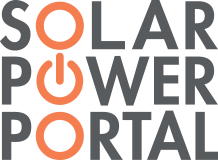.png)
University of Warwick to explore perovskite solar cells via £2.2 million grant. Image: Dominik Kubicki (Warwick University).
The University of Warwick is set to explore the use of a new type of solar cell material via a £2.2 million grant provided by the European Research Council (ERC).
The five-year study will delve into the atomic-level structure of perovskite solar cells, a technology that is described by US Department of Energy as thin-film devices built with layers of materials that are either printed or coated from liquid inks or vacuum-deposited.
Metal halide perovskite compounds offer a range of advantages when it comes to the creation of solar panels. The use of these cells could create more transparent and flexible solar panels which can be utilised across a range of uses including within space.
Via the £2.2 million ERC starting grant, funds will be put aside to purchase a 400MHz solid-state nuclear magnetic resonance (NMR) spectrometer. In utilising this, researchers will be able to investigate the atomic-level structure of solar cells with the aim to improve the durability of solar panels.
Perovskites, whilst posting rising efficiencies in lab conditions, are known to suffer from significant cell degradation when exposed to the elements and the technology is yet to be produced at an industrial scale.
The study will help examine why these accelerated degradation rates occur and what can be done to prevent this.
“This study will help diversify sustainable energy sources and explore more options in the quest to reduce reliance on fossil fuels. We’re keen to understand more about why these solar cells degrade in different atmospheric conditions at the atomic level, so we can design new, better materials and ensure maximum efficiency of this new sustainable energy source,” said Dr Dominik Kubicki, assistant professor in the Department of Physics, University of Warwick.
“Silicone is the current material used in solar cells and while those devices have a long durability of over 20 years, they have certain limitations. Solar cells need to be relatively thick; silicon is brittle, and it succumbs to cosmic radiation.
“Metal halide perovskites enable us to overcome these limitations, diversify the ways in which we can harvest solar energy, and apply them in contexts we had not previously anticipated. Investigating these materials will be very exciting, and we hope to find out how to make them more stable.”
While perovskites are yet to be commercialised there has been increasing interest in the technology around the world, as reported by Solar Power Portal’s sister site PV Tech.
European research into perovskite cell technology was on the rise in 2022. Helmholtz-Zentrum Berlin (HZB) announced plans in November for a four-year research programme in partnership with manufacturer QCells, the PEPPERONI consortium. Along with this, solar manufacturer Meyer Burger recently unveiled plans to develop its own perovskite tandem cell technology, also in partnership with HZB.
A recent study by researchers in Germany also found that perovskite-on-silicon PV modules are more environmentally advantageous across their lifecycle than traditional PV modules. This has provided a boost to commercialisation opportunities for the future.
